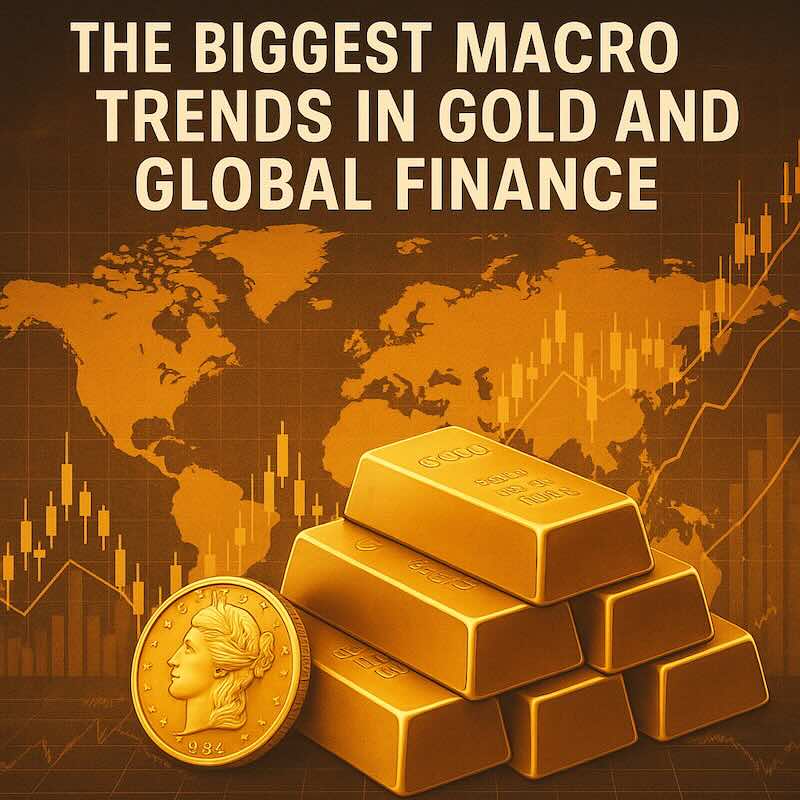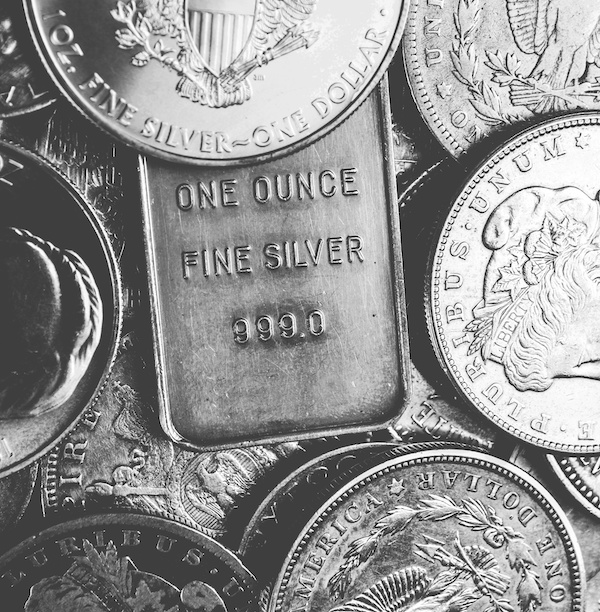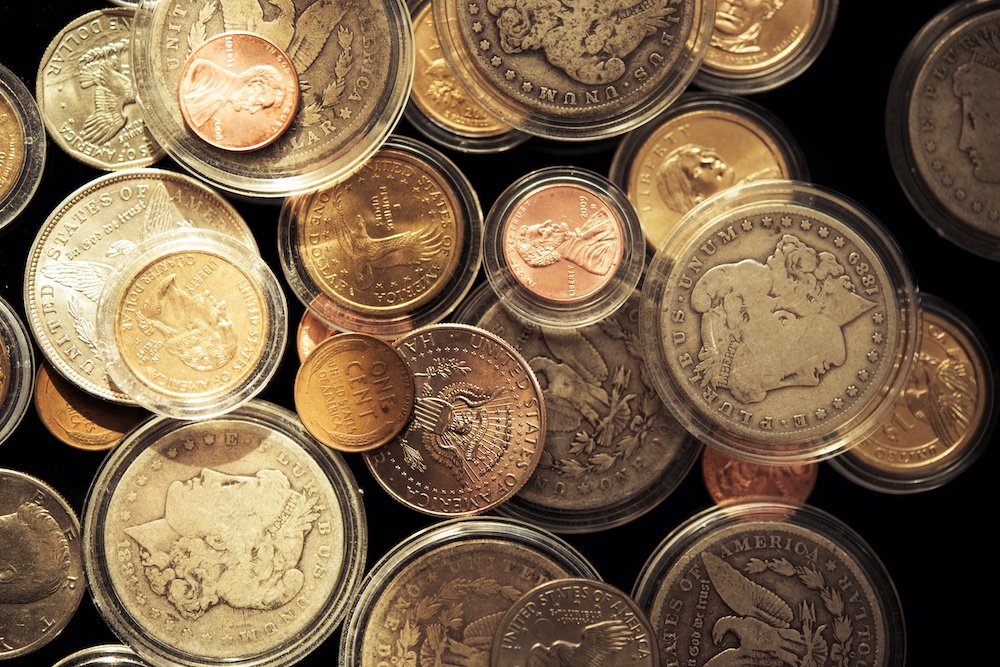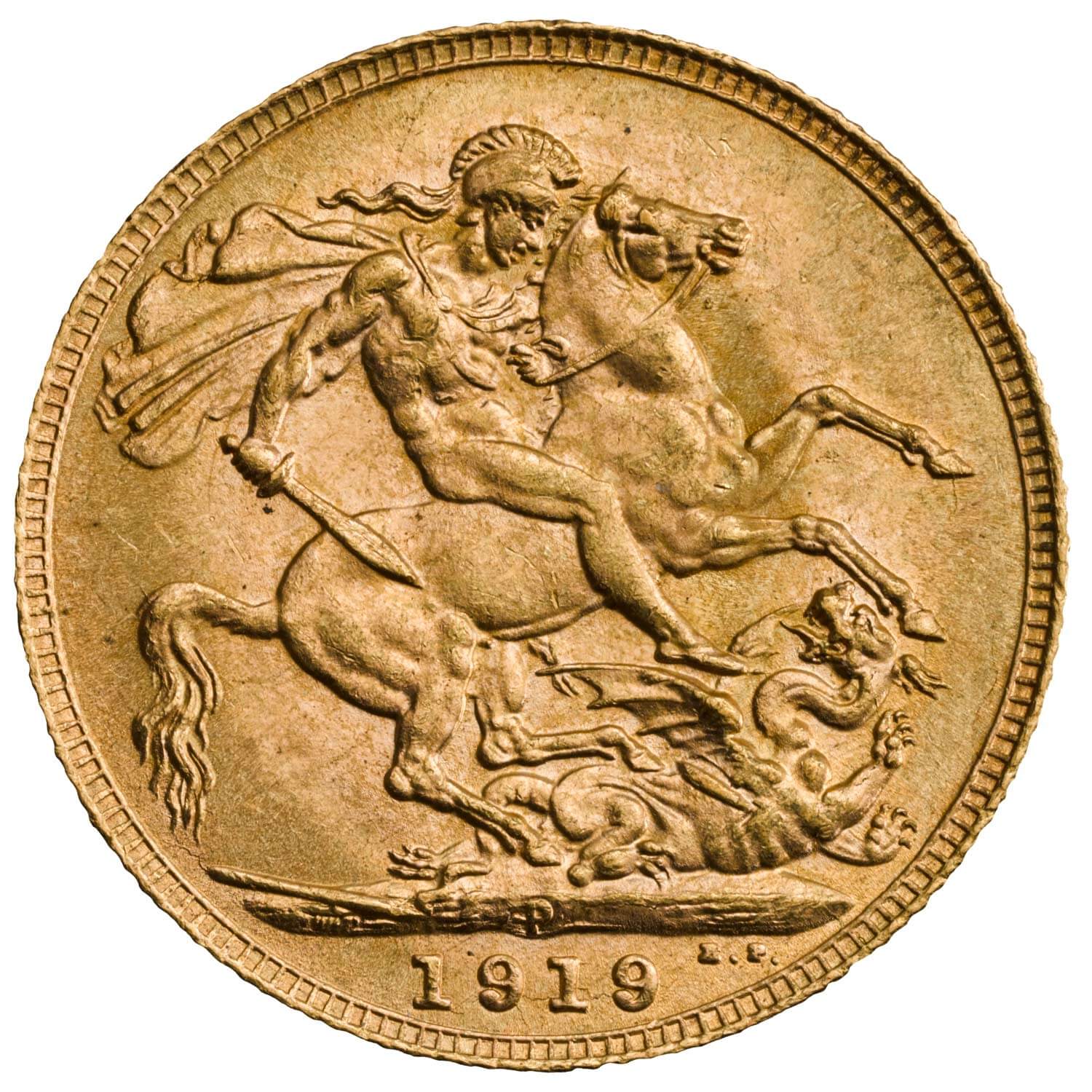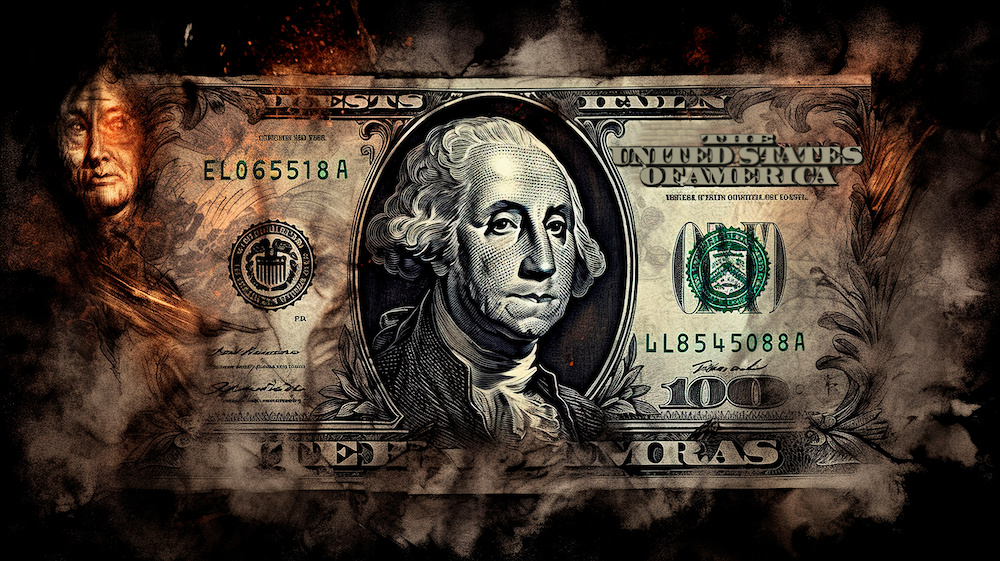Gold has always played a unique role in the global financial system. Several powerful macro trends support rising gold prices and are reshaping the market for both private and institutional investors.
Gold maintains intrinsic value across civilizations and economic cycles, regardless of fiat currencies or digital assets. It is a universal benchmark for wealth preservation and exchange, and hedge against fiat currency devaluation.
This article examines these trends and offers insights for investors seeking to protect and grow their wealth amid inflation and growing economic and geopolitical uncertainty.
Growing Global Distrust in Fiat Currencies
Perhaps the most important macro force driving gold demand is the accelerating distrust in the dollar and other fiat currencies. Persistent inflation, record government debt, and political polarization are undermining faith in the Federal Reserve and the dollar.
Across the U.S., a growing number of states are passing laws to restore gold and silver as legal tender.
In recent years, states such as Texas, Utah, Wyoming, and Arkansas have enacted or expanded legislation enabling citizens to use physical gold and silver for transactions, tax payments, or as legal tender alongside the U.S. dollar.
Many of these measures also eliminate state-level sales and capital gains taxes on precious metals, treating gold and silver as currency.
With rising bank fees and high inflation, Americans are increasingly seeking financial protection outside of the traditional banking system. The push to reinstate gold and silver as currency is a direct response to concerns about dollar devaluation, banking system fragility, and the loss of purchasing power.
In this environment, gold remains an unrivaled hedge against inflation. Its value is not contingent on the promises of the government or the Federal Reserve, making it an essential component of diversified portfolios to provide wealth stability during periods of monetary turbulence.
Accelerating Central Bank Gold Accumulation
Over the past five years, central banks across the Global South have significantly increased their gold reserves. The BRICS nations (Brazil, Russia, India, China, South Africa) are at the forefront, with China and Russia leading the charge. According to the World Gold Council, global central bank gold buying hit record levels in 2024, and this momentum continues into 2025.
Central banks are increasingly diversifying away from the U.S. dollar as a reserve currency to reduce exposure to devaluation and sanctions risk. Gold offers liquidity, no counterparty risk, and universal acceptance, making it a preferred reserve asset in a world of rising fragmentation and shifting trade alliances.
Investors should follow the central banks. Their accumulation supports the long-term price trend in gold and underscores its role as the world’s premier monetary anchor.
Basel III and Gold as Tier 1 Banking Collateral
In response to the 2008 Financial Crisis, the international consortium that regulates global banking, the Basel Committee on Banking Supervision (BCBS), established Basel III banking regulations to address the weaknesses in existing banking regulations that contributed to the crisis by strengthening bank capital, liquidity, and risk management practices.
Under Basel III banking regulations, physical gold is elevated to Tier 1 collateral status, on par with cash or sovereign bonds as a low-risk asset. Paper gold (futures contracts, ETFs, etc) is classified as a higher-risk asset, incentivizing banks to hold physical gold and making it more expensive for them to trade large volumes of paper gold.
The three-year phase-in for the capital ratio impact began on July 1, 2025, requiring institutions with assets exceeding $100 million increase their physical holdings while reducing paper trading. The country’s 28 largest banks are required to add to their Tier-1 holdings to offset riskier investments until the implementation is complete on June 30, 2028.
Eastern Sovereign De-Dollarization
Sovereign gold accumulation is not limited to the BRICS bloc. Across Asia and the Middle East, individual investors and countries such as Singapore, Turkey, and India are expanding their reserves to protect against Western financial influence and currency instability.
This eastward migration of gold reserves signals the gradual erosion of the U.S. dollar’s singular status as a reserve currency. With mounting fiscal imbalances in the West, many nations are actively seeking gold to replace the dollar.
Sovereign gold flows are a leading indicator of confidence in fiat currencies. Even at current prices, central banks continue to accumulate, effecting both spot prices and market sentiment.
JP Morgan expects $3,675 by the end of the year, with a steady rise above $4,000 per ounce in the second quarter 2026.
Tokenized Gold and Digital Bullion
Tokenization and digital bullion platforms are quietly revolutionizing the gold investment landscape. By leveraging blockchain and secure fintech solutions, these platforms allow investors to buy fractional gold that is directly tied to allocated, physical bullion stored in reputable vaults.
Unlike “unallocated” or “pooled” gold accounts, where the metal is not explicitly assigned to any single investor, allocated platforms ensure your investment is backed by specific, identifiable bullion in your name. This distinction is essential, as it provides investors with greater transparency, security, and legal ownership of their metal.
Several established U.S.-accessible companies now make this technology practical for everyday investors:
- OneGold (by APMEX and Sprott): Offers digital gold fully allocated and redeemable for physical coins or bars, stored in U.S., Canadian, or Swiss vaults.
- Vaulted.com: Allows users to purchase allocated fractional gold stored at the Royal Canadian Mint, with options for physical delivery at any time.
- BullionStar.us: Provides allocated gold (and silver) storage in Texas and Singapore, with online trading and complete delivery options.
- Goldmoney: (Global, including U.S.) Allows for allocated storage and delivery from a network of international vaults.
In Europe, Asia, and the Middle East, investors have access to local platforms including:
- Tether Gold (XAUT): Provides fully allocated gold stored in Swiss vaults, with each token representing ownership of one troy ounce of physical gold, which holders can redeem for physical bars upon identity verification.
- Minted (by the Royal Mint, UK): Provides a digital gold platform that allows British investors access to allocated gold stored at The Royal Mint in Wales that is redeemable for physical gold.
- Emirates Gold (Dubai Gold Token): Offers tokenized, fully allocated gold stored in the Dubai Multi Commodities Centre (DMCC) vaults.
Many of these platforms allow you to trade gold by the gram or ounce, track your holdings 24/7 online, and request your gold delivered to you door as bullion coins or bars when you decide to take possession.
Digital gold remains a small but fast-growing niche compared to traditional physical ownership. However, it’s gaining traction with investors seeking alternatives to physical holding because of the flexibility, lower premiums, and instant liquidity.
Positioning for the Future
While Bitcoin and cryptocurrencies take most of the headlines, the convergence of these macro trends suggests that the 1oz gold price will continue rising due to it’s strategic relevance.
